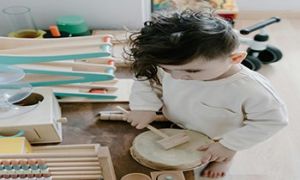The following article provides lyrics and meaning to popular nursery rhymes in Spanish, French, German, Italian, Japanese, Chinese, Hindi, Russian, and Swahili.
Spanish: "Canción de los Elefantes" (The Elephant Song)
- Summary: This playful song is about elephants balancing on a spider's web. As more elephants join, the web becomes increasingly crowded.
- Meaning: The song is lighthearted and fun, teaching children about animals and counting.
To listen and learn the song: Canción de los Elefantes
French: "Frère Jacques" (Brother John)
- Summary: This French nursery rhyme is about a monk named Jacques who is oversleeping and needs to wake up to ring the bells for morning prayers.
- Meaning: It emphasizes the importance of waking up on time and fulfilling one's duties.
To listen and learn the song: Frere Jacques
German: "Alle meine Entchen" (All My Ducklings)
- Summary: This German nursery rhyme describes ducklings swimming on a lake, dipping their heads into the water to search for food.
- Meaning: It highlights the behavior of ducks and introduces children to nature.
To listen and learn the song: Alle meine Entchen
Italian: "Ninna Nanna" (Lullaby)
- Summary: This traditional Italian lullaby is a soothing song sung to help children fall asleep. It often includes references to the moon and stars.
- Meaning: The lullaby provides comfort and a sense of calm, helping children relax before bedtime.
To listen and learn the song: Ninna Nanna
Japanese: "サクラサク" (Sakura Saku, Cherry Blossoms Bloom)
- Summary: This Japanese nursery rhyme celebrates the blooming of cherry blossoms, a significant cultural event in Japan.
- Meaning: It reflects the beauty of nature and the changing seasons.
To listen and learn the song: Sakura Saku
Chinese: "小小乐队" (Little Band)
- Summary: This Chinese nursery rhyme is about a small band of animals playing musical instruments and making joyful music together.
- Meaning: It emphasizes the joy of music and cooperation among friends.
To listen and learn the song: 小小乐队
Hindi: "आलू चारा चले" (Aloo Chara Chale, The Potato Goes)
- Summary: This playful Hindi rhyme describes a potato going on an adventure, encountering various challenges along the way.
- Meaning: It is fun and imaginative, encouraging creativity and storytelling.
To listen and learn the song: Aloo Chara Chale
Russian: "Колыбельная" (Kolybelnaya, Lullaby)
- Summary: This Russian lullaby is a gentle song sung to soothe a baby to sleep, often mentioning the moon and stars.
- Meaning: The lullaby provides comfort and reassurance, promoting a sense of security and peace.
To listen and learn the song: Kolybelnaya
Swahili: "Jambo Bwana" (Hello, Sir)
- Summary: This cheerful Swahili song is a greeting song that welcomes guests and expresses friendly sentiments.
- Meaning: It emphasizes hospitality, friendliness, and cultural pride.
To listen and learn the song: Jambo Bwana
Benefits Of Learning Rhymes In Different Languages
Learning rhymes in different languages offers a range of benefits for children:
-
Enhanced Language Skills: Exposure to different languages helps children develop better phonetic awareness, vocabulary, and pronunciation skills. It aids in language acquisition and boosts linguistic abilities.
-
Cultural Awareness and Appreciation: Learning rhymes from various cultures introduces children to different traditions, customs, and values. This fosters an appreciation for diversity and helps them understand the cultural context of the language.
-
Cognitive Development: Engaging with multiple languages stimulates cognitive functions. It enhances memory, problem-solving skills, and mental flexibility. Bilingual or multilingual children often show better cognitive development.
-
Improved Listening Skills: Listening to rhymes in different languages sharpens children's auditory discrimination. They become more adept at recognizing and differentiating sounds, which is crucial for language learning.
-
Social-Emotional Benefits: Multilingual rhymes can promote empathy and social cohesion. Children learn to appreciate and respect linguistic diversity, which can lead to better social interactions and relationships.
-
Creativity and Imagination: Rhymes often involve storytelling, imaginative scenarios, and creative language use. Exposure to diverse rhymes stimulates children's creativity and encourages them to think outside the box.
-
Fun and Engagement: Rhymes are inherently rhythmic and musical, making them enjoyable for children. Learning rhymes in different languages adds an element of fun and excitement, keeping children engaged and motivated.
-
Early Multilingualism: Introducing children to multiple languages early on sets the foundation for multilingualism. It becomes easier for them to pick up new languages and become proficient in them as they grow older.
Incorporating multilingual rhymes into early childhood education enriches the learning experience and supports children's overall development.



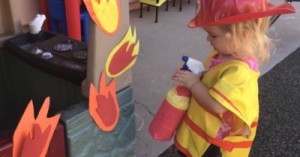



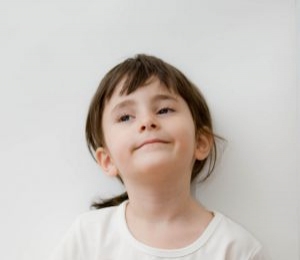 Open ended questions cannot be responded to with one word answers such as yes or no. These types of questions enables a child to provide
Open ended questions cannot be responded to with one word answers such as yes or no. These types of questions enables a child to provide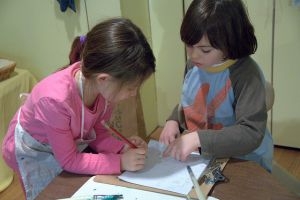 During your child’s preschool years, an important milestone begins to emerge. This is the development of pre-writing skills. Pre-writing skills are used to encourage, develop
During your child’s preschool years, an important milestone begins to emerge. This is the development of pre-writing skills. Pre-writing skills are used to encourage, develop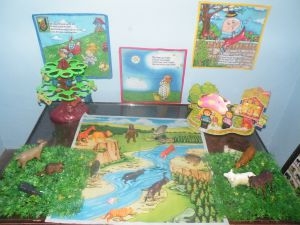 Open ended materials enables children to play freely. They are objects that have no rules to follow, use or function. Raw materials that can be
Open ended materials enables children to play freely. They are objects that have no rules to follow, use or function. Raw materials that can be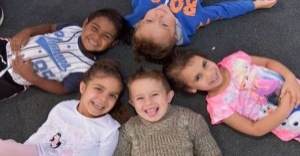 An Acknowledgment of the Country is a way of showing respect for the Traditional Owners and can be given by both non-Indigenous people and Aboriginal
An Acknowledgment of the Country is a way of showing respect for the Traditional Owners and can be given by both non-Indigenous people and Aboriginal Language plays an important role in a child’s development. It enables a child to communicate effectively with their family, learn at school, socialize with friends,
Language plays an important role in a child’s development. It enables a child to communicate effectively with their family, learn at school, socialize with friends, Like adults, children have to deal with their own stress in life. Moving house, starting a new school, preparing for a new sibling - these are
Like adults, children have to deal with their own stress in life. Moving house, starting a new school, preparing for a new sibling - these are Playdough is such a versatile material. It provides numerous benefits to children as they manipulate it, it is safe and soothing and provides children with
Playdough is such a versatile material. It provides numerous benefits to children as they manipulate it, it is safe and soothing and provides children with Teaching children about sustainability enables them to appreciate and respect the natural environment. Early childhood services can provide meaningful hand on learning experiences in order
Teaching children about sustainability enables them to appreciate and respect the natural environment. Early childhood services can provide meaningful hand on learning experiences in order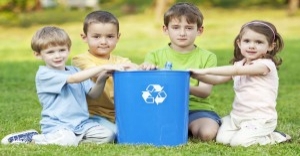 Recycling is an important concept that teaches children to care for the environment. It encourages children to be responsible and show a growing appreciating for
Recycling is an important concept that teaches children to care for the environment. It encourages children to be responsible and show a growing appreciating for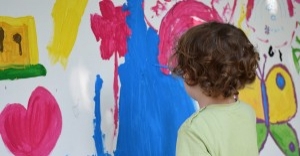 When children apply paint to paper, glue things together, or pound a lump of clay, they experiment with colour, shape design and texture.
When children apply paint to paper, glue things together, or pound a lump of clay, they experiment with colour, shape design and texture.

